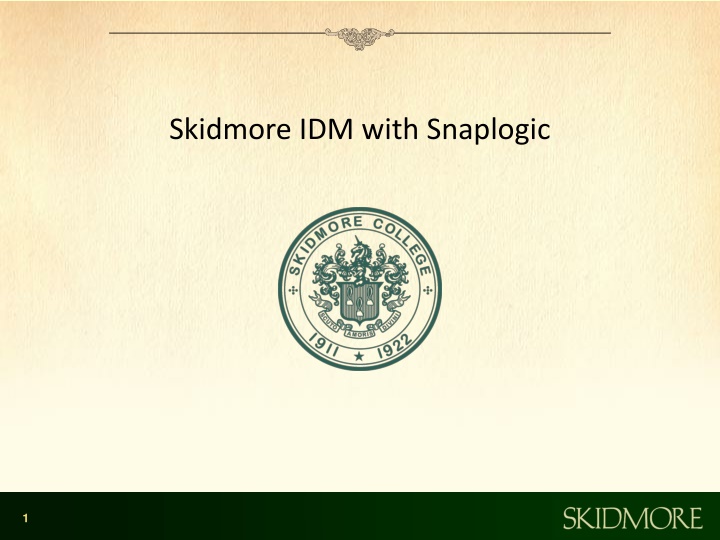
Skidmore IDM with Snaplogic: Streamlining Enterprise Systems
Discover how Skidmore College implemented Snaplogic to transition from Fisher IDM to Okta, migrate to Oracle HCM Cloud, manage multiple sources of truth, and automate system updates for seamless operations.
Download Presentation

Please find below an Image/Link to download the presentation.
The content on the website is provided AS IS for your information and personal use only. It may not be sold, licensed, or shared on other websites without obtaining consent from the author. If you encounter any issues during the download, it is possible that the publisher has removed the file from their server.
You are allowed to download the files provided on this website for personal or commercial use, subject to the condition that they are used lawfully. All files are the property of their respective owners.
The content on the website is provided AS IS for your information and personal use only. It may not be sold, licensed, or shared on other websites without obtaining consent from the author.
E N D
Presentation Transcript
Introduction Tony Kowalick Assistant Director of Enterprise Systems Paul Coleman DBA & Applications Architect Challenges/Goals: Move from Fisher IDM hosted system to Okta. Move from Oracle Ebiz on prem to Oracle HCM Cloud with SSO. Multiple Sources of Truth to manage. 2
About IDM SSO Okta Card System Current Snaplogic integrations. IDM Database FUTURE Snaplogic integrations. Ellucian Banner Oracle HCM 3
How it works Receive notification of source change via scheduled processes that are inserted into a queue table Snaplogic runs these SYSTEM_UPDATES through central pipe which dynamically runs several endpoint specific processes based on mapping table. We maintain current profiles in local database for source and destination systems. This allows us to leverage this data for a demographic data layer we can use throughout the college. 4
Separate Destination update queue allows us to do mass updates to DEST systems if warranted 5
Benefits / Lessons Modular design. Dynamically called pipelines means that we can roll in new systems/change systems as needed. Downstream update processes can be tailored to destination system based on needs. Can operate on an almost real time basis. Currently have SL sweeping our queues for changes every 3 minutes using our Groundplexes. We went a bit API crazy and will be revisiting that. If you can think of it you can probably do it, but remember to ask yourself if you should. Don't forget documentation! Snaplogic community is a great resource. 7
Questions Questions? 8
